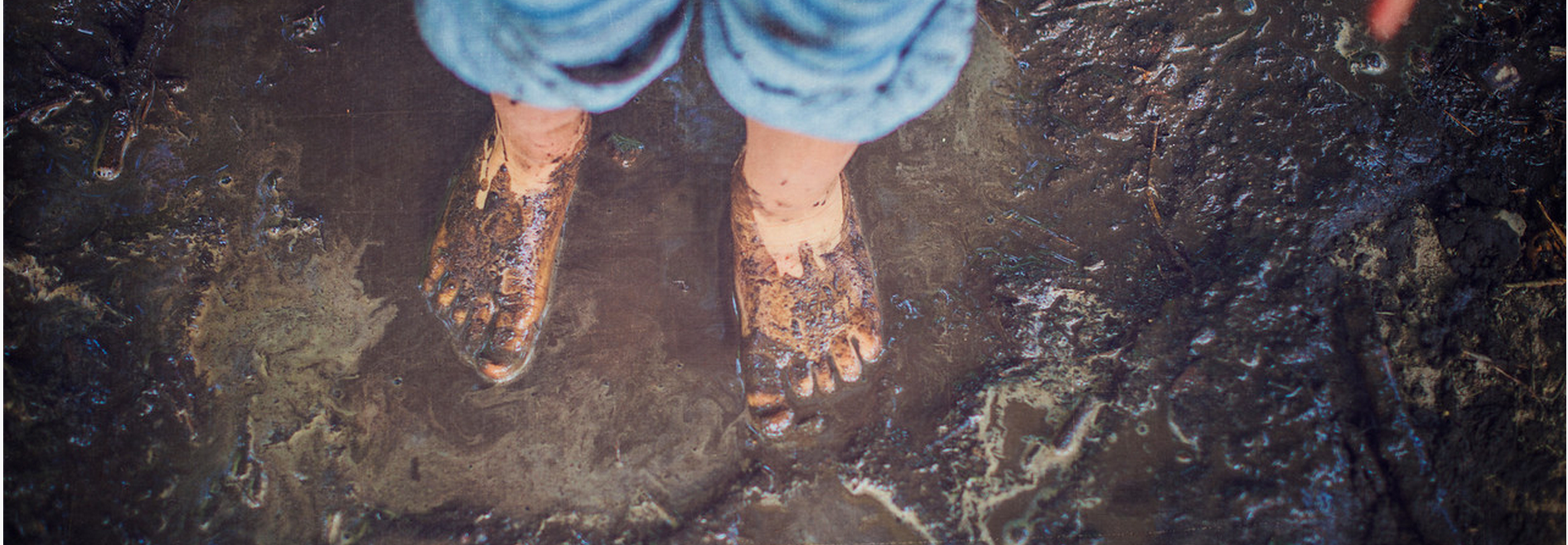Build a Fire
-
Age: to
-
Time: Under 1 hour
-
Materials: sticks, red bits of fabric or paper, twine, forest putty (optional)
- Skills: Creativity, Problem Solving, Sensory, Self Reliance
As part of our June, 2021 Calendar, we published this sweet, fun and safe way to introduce kiddos to all of the marvel camp fires have to offer.
And, if you don't have one yet, you can now download your free copy of this month's calendar with new ways to connect and play in nature at tinkergarten.com/calendar.
The Guide
Build a Pretend Campfire
As magical as real fire is, kids get a lot out of gathering and arranging the wood, then turning on their imaginations to enjoy a pretend “campfire.”
- To get the play started, you can wonder together with your children, “Our campsite needs a fire to cook our food on. What could we use to build a fire?” After discussing some ideas, send them off to begin collecting their materials.
- Invite your kids to gather and arrange sticks and items found in nature to build a fire to cook food, warm everyone at night or bring everyone together for singing (including a few beloved toys or the local wildlife). Need inspiration? Try out one of these types of campfire structures. We've had the most success making the Log Cabin, Teepee and Star types with kids.
- Once their fire is built, marvel at what they have created. Take a small stick or other object and pretend to light the fire. “How does the fire feel?” “Do we need to add more wood to the fire to keep it going?”
- As an added bonus, kids can add red fabric or scraps of paper to make pretend flames. You could even incorporate outdoor playdough into the pretend play scenario. At Tinkergarten, we call playdough forest putty to inspire more free and playful use outdoors. Kids can smush, squish, and explore the forest putty in a number of ways, including making pretend marshmallows to “roast” around the campfire!
Making a REAL Campfire!
Introduce the “Circle of Safety:”
If you have children old enough to help, let kids know that they can help you set up a “circle of safety.”Lay out the circle so you can help kids learn to keep safe when you gather around the fire.
To create a “Circle of Safety” lay twine in a circle around the fire such that there is 4 feet between the string and the fire all the way around.
- If you are working with kids, they may be 3-4 feet tall, so you can ask them to lie down and raise their arms. That can tell you, roughly, how far to make the twine.
- Get their help at laying the twine down around the fire.
- Explain to kids that this makes a “safe ring” or “safe circle.” If we keep our feet outside of the circle, we’ll stay safe.
Some language we’ve used
- “Fire is a fantastic part of camping, but we have to be really careful around fires. We added this circle of twine to remind us to add a 4” circle around real fires when we go camping. Fire safety experts call this a “circle of safety.”
Before you light:
- “Since our fire is not yet lit, we can go inside this circle of safety while we play. But, once we decide to make a real fire as a family, we need to remember to keep your feet outside of the circle.”
- To practice and get ready for your real fire, pretend the fire is lit, and it’s really hot. Play games to help your child practice staying outside of the "circle of safety". Play tag, walk like favorite animals (or any game when you move around) right around the fire. BUT, we can’t step inside/have to stay outside the safe circle. If you step inside, you are out (or you do a silly dance...or something).
- Let kids know that after we make our fire, we can make sure that real fire is put out really carefully so that the forest and park around our campfire stays safe, too!
Why is this activity great for kids?
Gathering “wood” (sticks, logs, leaves—whatever your park has) to make a pretend (or real) fire activates the transporting schema and gives kids the chance to do “heavy work” and activate the big muscles and joints of their bodies—a super satisfying way to promote physical wellness and to balance the sensory system. Once kids understand a bit more about fire safety, everyone can enjoy campfires even more, especially us!



